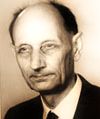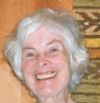Getting Pregnant by the stars- what modern astrologers say
Here are some modern day astrologers and brief descriptions of the methods that they used to advise on a person’s likelihood of having children. You will need some knowledge of astrology to test these techniques , so if you want to test them and you are not an astrologer or don’t have a good understanding of the system, you will need astrological advice to help you do this.
These techniques to help find the best time to attempt conception successfully are recommended based on the personal experiences of the practitioners advocating them, but they have not been subjected to the same rigorous research methods that Dr. Harris carried out in her investigations of Lilly’s methods in order to create the model that you can use on this site to help women find the best months and years for having children according to certain astrological rules, whether seeking fertility treatment or just hoping to start a family in the ordinary way (see what Dr. Harris’ research told her).
Marion March
 Marion March(1923 – 2001), www.solsticepoint.com/astrologersmemorial/march.html, March believed that conception was more likely when the Sun and the Moon on the day that a woman attempted conception were the same distance apart on the day that she was born but in the same way – that is to say, if the moon was sixty degrees ahead of the sun in her birth chart it had to be sixty degrees ahead of the sun on the day she wanted to conceive successfully. As long as this happened on the day of attempted conception within a window of sixteen hours of the attempt, then her chances of succeeding in conceiving were greater than on any other day. March claimed a 70% success rate for this method. When Dr. Harris tested it on the available data in her first study (11 treatments), she achieved a 66% success rate in identifying successful (resulted in babies) and failed embryo implants. For more information also visit, these Astrology and Fertilitypages based on March’s work.
Marion March(1923 – 2001), www.solsticepoint.com/astrologersmemorial/march.html, March believed that conception was more likely when the Sun and the Moon on the day that a woman attempted conception were the same distance apart on the day that she was born but in the same way – that is to say, if the moon was sixty degrees ahead of the sun in her birth chart it had to be sixty degrees ahead of the sun on the day she wanted to conceive successfully. As long as this happened on the day of attempted conception within a window of sixteen hours of the attempt, then her chances of succeeding in conceiving were greater than on any other day. March claimed a 70% success rate for this method. When Dr. Harris tested it on the available data in her first study (11 treatments), she achieved a 66% success rate in identifying successful (resulted in babies) and failed embryo implants. For more information also visit, these Astrology and Fertilitypages based on March’s work.
Dr. Eugen Jonas
 A modern astrological method of identifying fertile points in a woman’s life was developed by Dr. Eugen Jonas http://skepdic.com/jonas.html from his reading of astrological texts from ancient Egypt, Greece and India. Ancient astrologers asserted that a woman could achieve conception only at certain phases of the moon, and these phases must match exactly the phase of the moon at the time when the woman was born. So, for example, if a woman was born when the moon was 180 degrees distant from the sun, during her reproductive life she would be able to conceive only when the moon occupied the same angular relationship on any given day in her menstrual cycle. Maximum fertility was reached when the angular relationship matched that at the time of the woman’s birth to the degree and minute of arc with a margin of two days before exactitude, when conception was increasingly likely, even during menstruation.
A modern astrological method of identifying fertile points in a woman’s life was developed by Dr. Eugen Jonas http://skepdic.com/jonas.html from his reading of astrological texts from ancient Egypt, Greece and India. Ancient astrologers asserted that a woman could achieve conception only at certain phases of the moon, and these phases must match exactly the phase of the moon at the time when the woman was born. So, for example, if a woman was born when the moon was 180 degrees distant from the sun, during her reproductive life she would be able to conceive only when the moon occupied the same angular relationship on any given day in her menstrual cycle. Maximum fertility was reached when the angular relationship matched that at the time of the woman’s birth to the degree and minute of arc with a margin of two days before exactitude, when conception was increasingly likely, even during menstruation.
This method is similar to the one used by Marion March but March also factored in other astrological considerations, which made her approach different from that of Dr. Jonas.
Dr. Margaret Millard
 The moon has been associated with childbirth since ancient times, and in her book The Moon and Childbirth, published in 1999 Dr. Margaret Millard (1916 – 2004) www.solsticepoint.com/astrologersmemorial/millard.html considers astrology and fertility in relation to conception and birth, heredity, choosing the sex of the child, and accurately predicting the date and time of birth. She also presents a number of case histories from her personal client files to illustrate her theories and the ancient theories of the Trutine of Hermes (part of a collection of writings that emerged in 15th Century Florence, and attributed to the god-priest Hermes Trismegistus, nynkefokma.livejournal.com/1590.html). He states that the ascendant at birth of a child gives the position of the moon at time of conception. In relation to fertility treatment and astrology, Millard gives five examples of embryo implant times resulting in successful outcomes in relation to lunar influences, but “fortunate” Jupiter conditions were present in all five examples.
The moon has been associated with childbirth since ancient times, and in her book The Moon and Childbirth, published in 1999 Dr. Margaret Millard (1916 – 2004) www.solsticepoint.com/astrologersmemorial/millard.html considers astrology and fertility in relation to conception and birth, heredity, choosing the sex of the child, and accurately predicting the date and time of birth. She also presents a number of case histories from her personal client files to illustrate her theories and the ancient theories of the Trutine of Hermes (part of a collection of writings that emerged in 15th Century Florence, and attributed to the god-priest Hermes Trismegistus, nynkefokma.livejournal.com/1590.html). He states that the ascendant at birth of a child gives the position of the moon at time of conception. In relation to fertility treatment and astrology, Millard gives five examples of embryo implant times resulting in successful outcomes in relation to lunar influences, but “fortunate” Jupiter conditions were present in all five examples.
Dr. Rajesh K. Naz
 Dr. Naz, www.hsc.wvu.edu/som/micro/faculty/naz.asp, Professor in the department of Obstetrics and Gynaecology, West Virginia University School of Medicine, USA says that case studies suggest astrological patterns can indicate fertility and possible reproductive problems in the birth charts of both men and women when considering astrology as it is used in India, or Vedic astrology as it is better known. He says that positions of certain planets in certain areas of the birth chart may give indicators about the likelihood of future children.
Dr. Naz, www.hsc.wvu.edu/som/micro/faculty/naz.asp, Professor in the department of Obstetrics and Gynaecology, West Virginia University School of Medicine, USA says that case studies suggest astrological patterns can indicate fertility and possible reproductive problems in the birth charts of both men and women when considering astrology as it is used in India, or Vedic astrology as it is better known. He says that positions of certain planets in certain areas of the birth chart may give indicators about the likelihood of future children.
